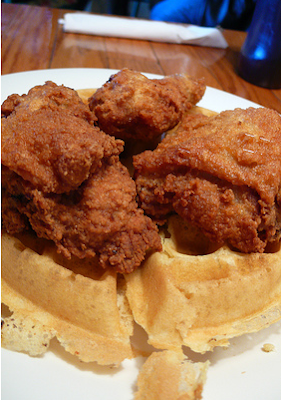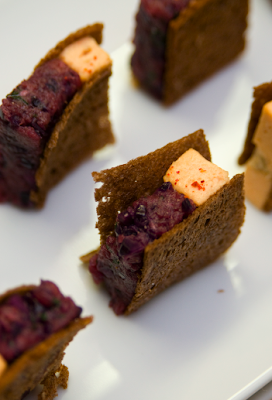Tap This: Home Brewing Part 4, Moving to Secondary Fermentation
READ ALL 6 PARTS OF THEÂ TAP THIS HOME BREWING GUIDE HERE
I am so excited to try this beer! I have a long way to go before it will be drinkable (at least 40 days). So meanwhile I started another batch, this time a blond summer ale that should actually be finished before this IPA because it does not take quite as long to mature. I figure I might as well keep the batches going so once one is ready, another will not be far behind.
About 3-5 days after the day of the boil, the primary fermentation stage is coming to an end. This can be noticed as the vigorous release of carbon dioxide through your airlock begins to slow down. At this point most of the sugars have been converted into alcohol and CO2. By the 6th day for most ales it is time to move your beer over to the secondary fermentation vessel. Beer usually stays in secondary for 10-20 additional days (sometimes longer depending on the type of beer) before bottling.
Why is it important to move to a secondary vessel and what is happening during this time? You could go ahead and bottle right away if you wanted, and you would still have beer, but it would be a young beer that is filled with debris made up of flakes of protein, dead yeast cells, and hops. Moving to secondary allows you to leave the sediment behind in the bottom of your primary fermentation vessel. During the time your beer spends in secondary the yeast will also further remove some undesirable flavor components. Most of the yeast remaining will fall out to the bottom of the vessel, the haze will begin to clear, and you will be left with a clear, bright, and much better beer that is ready to be carbonated.
Moving to your secondary fermentation vessel is the easy part. Here is how to do it:
1) Carefully move your Primary Fermentation vessel onto your kitchen counter or something at least 3 ft from the ground and let it sit for an hour or 2 to ensure debris settle to the bottom.
2) Sanitize your secondary fermentation vessel, airlock, and plastic hose. You can use another plastic bucket for secondary but it is very beneficial to use a glass carboy during secondary because you can see the beer. This is important because 10-20 days down the line you will want to check to see if the haze has cleared and glass allows you to see that.
3) Attach the hose to the spigot on the bottom of your primary fermentation vessel and run the other end into your secondary vessel so that it snakes around the bottom. It is important to use a hose and to do it this way in order to prevent your beer from oxidizing.
Note: Oxidation is bad! It causes a stale and nasty flavor. It is cause by introducing oxygen to beer after fermentation usually by movement or heat. It happens a lot with imported beers during shipping and I am sure most everyone has experienced these off-putting flavors in some imports. You want to avoid as much agitation, and aeration as possible while moving to your secondary fermentation vessel.
Also – it would not be a bad thing to take a sample of beer from the spigot before attaching the hose. Take the gravity to see how your beer is progressing as shown in the previous post, and taste it!
4) Next open up your spigot and let the beer gently and smoothly flow from the primary vessel to secondary. Remember to try to avoid oxidation. When it has all flowed out do not tilt the primary vessel to get more beer out because the goal here is to leave the sediment behind. Your spigot is an inch or so from the bottom and should let out just enough liquid to leave all the bad stuff behind. (see pictures and video at the top of the post)
Notice how it is still a little cloudy. A few weeks in here will clear it up:
5) Pull out the hose and stick the airlock in the top of your vessel.
Inside the Primary Fermentation Vessel after emptying. Sediment made up of dead yeast, proteins, and hops (what you want to leave behind):
6) Move the vessel to a cool and dark place and avoid any agitation while you are waiting for things to settle. You will be ready to bottle in 10-20 days or as specified by your recipe. I like to keep a towel around my vessel to keep light out and to help regulate temperature.
The beer is getting closer and closer to being ready. You better start getting some bottles ready because you are going to need a bunch of them in a couple weeks. You can buy bottles but why do that when you can just buy beer, drink it, and save the bottles. Make sure you are getting beers with bottles that do not screw off at the top and you are good to go!
This beer will not be ready to bottle until around May 9th or so. It takes a little longer to mature then an average ale. Next post will be something random so stay tuned.
-CJ





























